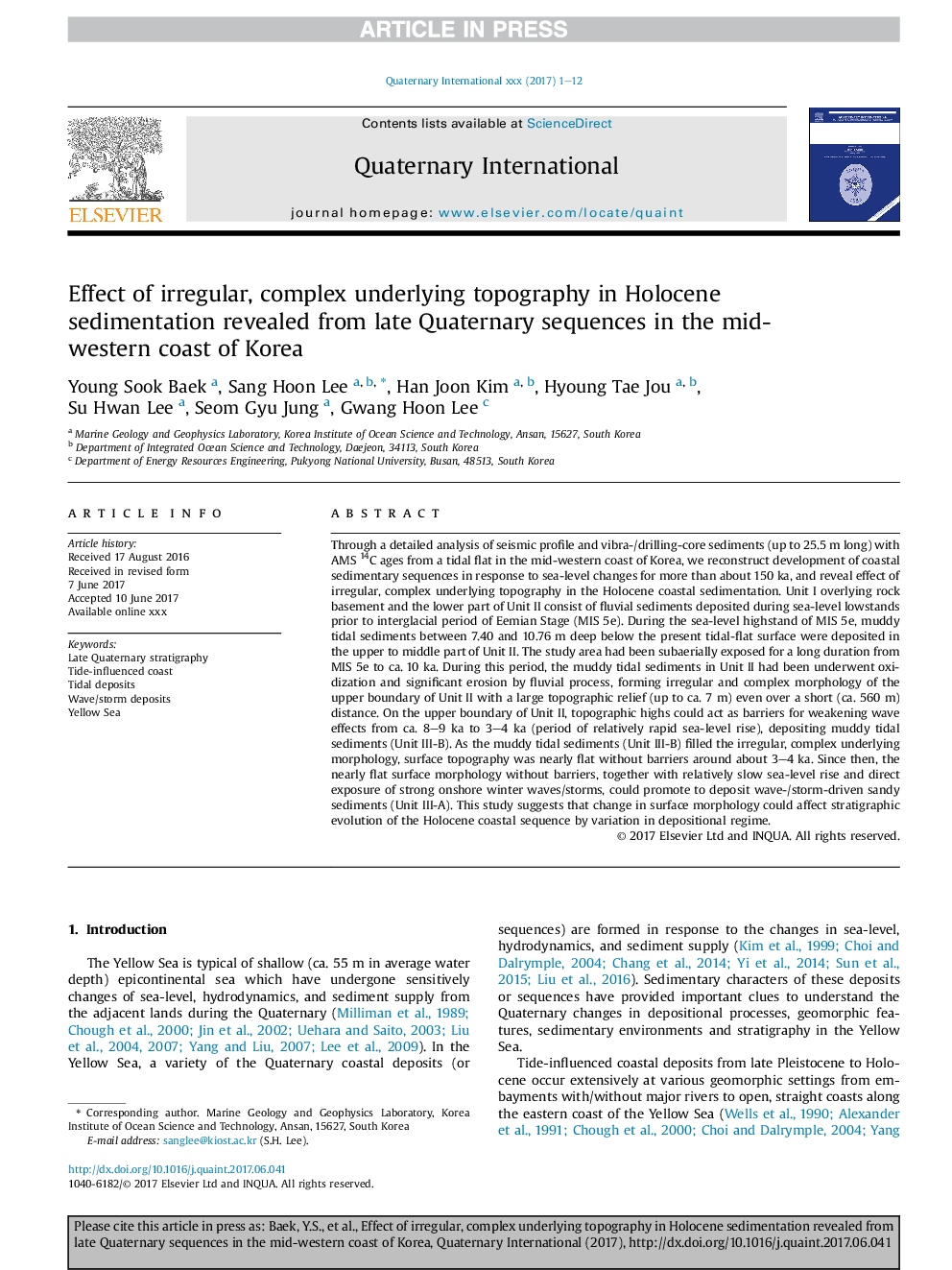| کد مقاله | کد نشریه | سال انتشار | مقاله انگلیسی | نسخه تمام متن |
|---|---|---|---|---|
| 7451213 | 1484064 | 2017 | 12 صفحه PDF | دانلود رایگان |
عنوان انگلیسی مقاله ISI
Effect of irregular, complex underlying topography in Holocene sedimentation revealed from late Quaternary sequences in the mid-western coast of Korea
ترجمه فارسی عنوان
اثر توپوگرافی زیرکانه نامنظم و پیچیده در رسوبات هولوسن از اواخر کواترنر در ساحل میانه غربی کره
دانلود مقاله + سفارش ترجمه
دانلود مقاله ISI انگلیسی
رایگان برای ایرانیان
کلمات کلیدی
چینه شناسی قره قاطی بعدی، سواحل تحت تاثیر جزر و مد، رسوبات جزر و مد، ذخایر موج / طوفان، دریای زرد
موضوعات مرتبط
مهندسی و علوم پایه
علوم زمین و سیارات
زمین شناسی
چکیده انگلیسی
Through a detailed analysis of seismic profile and vibra-/drilling-core sediments (up to 25.5Â m long) with AMS 14C ages from a tidal flat in the mid-western coast of Korea, we reconstruct development of coastal sedimentary sequences in response to sea-level changes for more than about 150 ka, and reveal effect of irregular, complex underlying topography in the Holocene coastal sedimentation. Unit I overlying rock basement and the lower part of Unit II consist of fluvial sediments deposited during sea-level lowstands prior to interglacial period of Eemian Stage (MIS 5e). During the sea-level highstand of MIS 5e, muddy tidal sediments between 7.40 and 10.76Â m deep below the present tidal-flat surface were deposited in the upper to middle part of Unit II. The study area had been subaerially exposed for a long duration from MIS 5e to ca. 10 ka. During this period, the muddy tidal sediments in Unit II had been underwent oxidization and significant erosion by fluvial process, forming irregular and complex morphology of the upper boundary of Unit II with a large topographic relief (up to ca. 7 m) even over a short (ca. 560 m) distance. On the upper boundary of Unit II, topographic highs could act as barriers for weakening wave effects from ca. 8-9 ka to 3-4 ka (period of relatively rapid sea-level rise), depositing muddy tidal sediments (Unit III-B). As the muddy tidal sediments (Unit III-B) filled the irregular, complex underlying morphology, surface topography was nearly flat without barriers around about 3-4 ka. Since then, the nearly flat surface morphology without barriers, together with relatively slow sea-level rise and direct exposure of strong onshore winter waves/storms, could promote to deposit wave-/storm-driven sandy sediments (Unit III-A). This study suggests that change in surface morphology could affect stratigraphic evolution of the Holocene coastal sequence by variation in depositional regime.
ناشر
Database: Elsevier - ScienceDirect (ساینس دایرکت)
Journal: Quaternary International - Volume 459, 30 November 2017, Pages 89-100
Journal: Quaternary International - Volume 459, 30 November 2017, Pages 89-100
نویسندگان
Young Sook Baek, Sang Hoon Lee, Han Joon Kim, Hyoung Tae Jou, Su Hwan Lee, Seom Gyu Jung, Gwang Hoon Lee,
